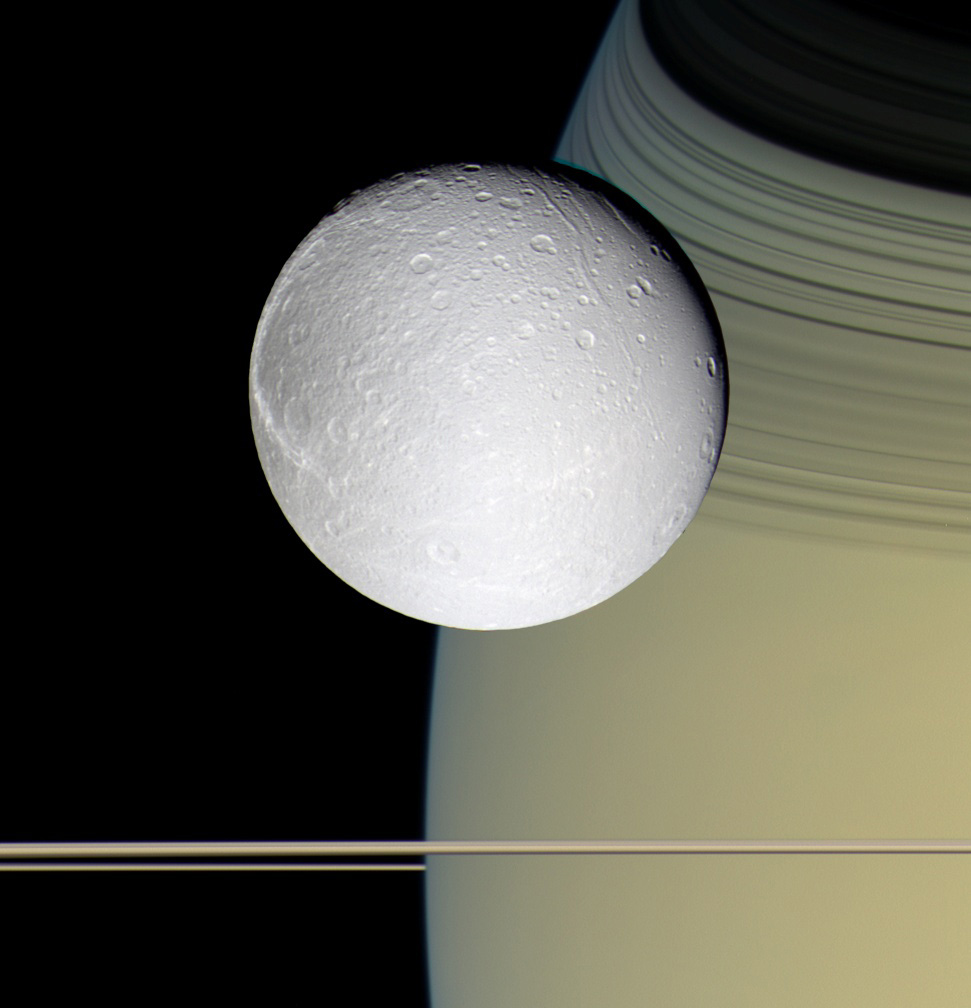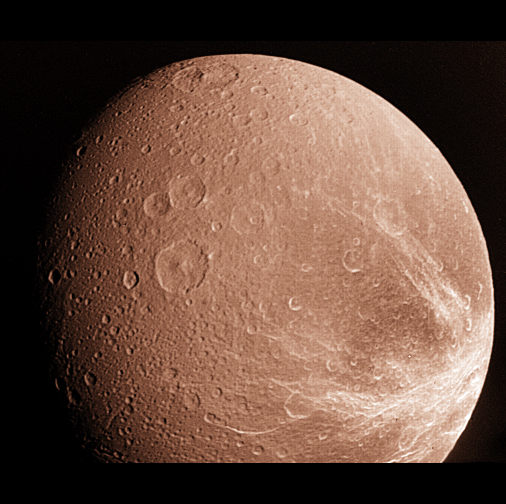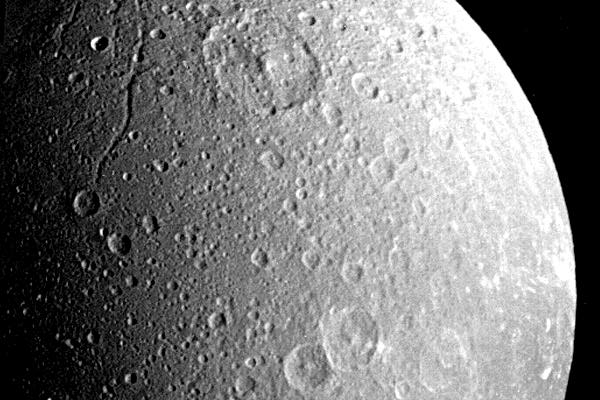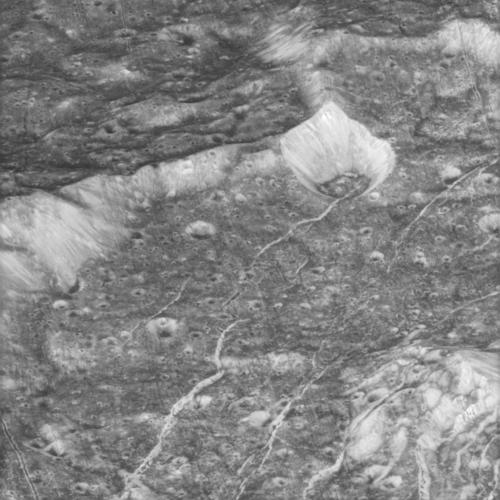
Saturn's moon Dione [dy-OH-nee] is probably composed of a rocky core making up one-third of the moon's mass, with the rest water-ice. Scientists learn this by studying its effect on Saturn's gravity field. Its ice coverage is less than that of Tethys and Rhea.
Image by the Cassini spacecraft.

Dione, as seen by the Voyager 1 spacecraft in 1980. The craters in this image have mountains in the middle of them. This shows that Dione's surface was partially melted when the meteorite hit.

This Cassini image of Dione clearly shows some large craters with domes in the center, where Dione was hit by comets or asteroids. If the domes are pointy, they probably came from surface material melting and refreezing. If the domes are rounded, shallowly sloping structures, they were probably caused when the center of the crater "bounced" back after being struck.

This close-up of icy Dione reveals a variety of surface features unlike any other place in the solar system. It is so close to Saturn that the strong gravity of this giant planet warps Dione's surface structure.
Image by the Cassini spacecraft.

